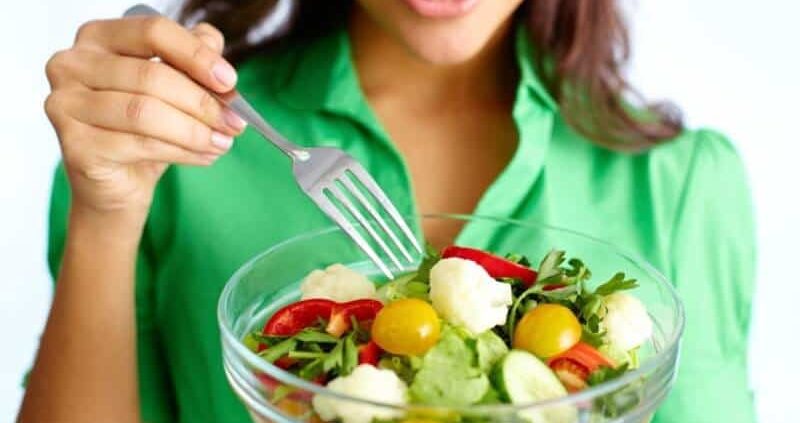Now you know, you know that you have a Pitta-Kapha body Prakriti. The next important thing comes is the diet.
You must be confused about what to eat and what not to eat as Pitta and Kapha have a few complimentary and a few antagonizing properties.
A Pitta-Kapha type needs to always keep an eye on the food. You must be probably wondering about the Pitta-Kapha pacifying diet & foods. But don’t worry your search ends here.
In this article, in depth, we have dealt with the Pitta-Kapha pacifying diet and food. Read, the principles of this diet and make healthy food choices for your doshas.This should be part of your Pitta Kapha daily routine.
Table of Contents
Pitta-Kapha Pacifying Diet
A dual Prakriti asks you to closely listen to your body. The dosha that is aggravated needs your attention. So, when a dosha is aggravated use foods that have opposite properties of the dosha.
However, there are few guidelines that you should follow to maintain the balance of a Pitta-Kapha body constitution. They are discussed below:
1. Moderate Well-cooked Food
The dual Prakriti asks you to eat in moderate quantities. Your food should be well-cooked and your timing should be consistent for breakfast, lunch, and dinner.
If you prefer snacking, go for fruits, steamed or sauteed sprouts in midmorning and evening. Additionally, your lunch should be the largest meal of the day and the dinner and breakfast should be light.
2. Eating Environment
Always eat in a calm and quiet place. Eating when walking, working, or talking is not recommended as it causes indigestion and acidity. Always chew your food properly.
3. Liquid Intake
When taking liquids always take liquids one hour before or after meals. It is not preferred during the meals as it dilutes the digestive juices.
4. Go For Warm Food
For the Pitta-Kapha body type, warm food is recommended. Prefer cooked food that has a cold nature like zucchini, squash, melons, gourds, whole wheat, oats, and quinoa.
These are pacifying for both Pitta and Kapha. So, prefer taking raw vegetable in hot weather and steam vegetable in cold weather.
5. Superfood For Pitta-Kapha
Barley is the superfood for both doshas. It keeps the cholesterol level normal and blood sugar. Other superfoods are wild rice, oat, white bran, and quinoa.
6. Small Quantities In Fat
Fats like soybean oil and olive oil can balance both the doshas. You can also go for ghee in small quantities.
7. Go Fo Starchy Vegetables
Vegetables that are not too starchy but not hot are good for Pitta-Kapa. Vegetables like a gourd, zucchini, celery. leaf green and green beans can be taken freely. Avoid taking root vegetables as they aggravate both the Pitta and Kapha Dosha.
8. Say No To Yogurt
Yogurt is best avoided as it aggravates both the Pitta and Kapha. Instead, you can go for low-fat buttermilk. It is beneficial for overall health, especially for digestion.
9. Avoid Too Sweet Or Too Sour Fruits
Fruits that are too sour or too sweet are not good for both the doshas. Go for fruits like pear and apple that have a moderate taste. You can also go for roasted seeds like sunflower seeds and pumpkin seeds as a healthy snack.
10. Be Cautious With The Spices
You can go for spices like fennel, coriander, garlic, ginger, mint, cumin, and curry leaves. Moreover, you can also have turmeric and fenugreek but in small quantities.
If you feel your Kapha dosha is aggravated go for black long peppers and fresh ginger. You can check your Kapha aggravation by checking the mucous production, white coating on the tongue, and loss of appetite.
11. Go For Bitter And Astringent Tastes
Bitter and astringent is pacifying for both Kapha and Pitta doshas. So include bitter food like bitter gourd, mint, curry leaves, and fenugreek leaves and astringent food like leafy greens like spinach and kale.
12. Avoid Alcohol And Caffeinated Beverages
Avoid alcohol, too much hot coffee, black tea, or other cold beverages. Nevertheless, you can go for cooler drinks in the summer season.
For the Pitta-Kapha body type water is the best beverage, you should take it in moderate amounts as per your thirst and hydration levels.
Pitta-Kapha Pacifying Food
Now, let’s move on to the food list. Down below, is a list of food items form every group that you should go for and avoid. Do read them carefully to maintain an ideal diet.
1. Grains
It is best to eat well-cooked grains. Completely avoid yeast and refined grains.
Grains To Go For
- Barley
- Wild rice
- Oats With Bran
- Quinoa
Grains To Go For In Moderation
- Amaranth
- Corn
- Durham flour
- Millet
- Museli
- Oats(dry/cooked)
- Pasta
Grains To Avoid
- Buckwheat
- Brown Rice
- White Sticky Rice
2. Fruits
Fruits are light and cooling so they are always good for Pitta and Kapha. However, extremely sour and sweet are to be avoided.
Fruits To Go For
- Apple
- Applesauce
- Apricots
- Berries
- Cherries
- Pears
- Pomegranates
- Prunes
- Raisins
- Amla
- Black Plum
Fruits To Avoid
- Mango
- Papaya
- Strawberry
- Oranges
- Lime
- Kiwi
- Plum
- Cranberries
3. Vegetables
Well-cooked cold vegetables are good for Pitta and Kapha. Most of the vegetable have light cool property so you should include them in your daily diet. Avoid raw vegetables and salad as they are fibrous and difficult to digest.
Vegetables To Go For
- Artichoke
- Cooked Beetroot
- Asparagus
- Bittermelon
- Broccoli
- Cabbage
- Cooked carrots
- Cauliflower
- Celery
- Cilantro
- Brussels sprouts
- Dandelion green
- Leafy green
- Lettuce
- Mushroom
- Kale
- Okra
- Peas
- Potatoes
- Summer squash
- Wheatgrass sprout
- Parsnip
- Radish
- Onion
- Parsley
Vegetables To Avoid
- Chilies
- Radish
- Eggplant
- Green bell peppers
4. Legumes
They are generally dry and cold and somewhat heavy. You can eat them in moderation. However, well cook them, add some spices, and prefer soaking them overnight for easy digestion.
Legumes To Go For
- Aduki beans
- Black gram
- Navy beans
- Split peas
- Fava beans
- Kidney beans
- Lime beans
- Soybeans
- Tofu
Legumes To Avoid
- Chickpeas
- Peanuts
- Tempeh
5. Oils
Oils are generally heavy and moist so, you should use them in small amounts to manage your Pitta and Kapha.
Oil To Go For
- Soy
- Ghee
- Sunflower
- Olive
- Coconut
Oil To Avoid
- Canola
- Flax seed
- Margarine
- Avocado
- Lard
- Mustard
- Peanut
- Seasme
6. Spices
They are good for digestion of food and absorption of nutrients. Mild to moderate quantity of spice is good for both Pitta and Kapha. Be careful, not to go fo spices that are very hot as they aggravate the doshas.
Spices To Go For
- Cumin
- Ginger
- Garlic’
- Fennel
- Curry
- Mint
- clove
- peppermint
- Saffron
- Chamomile
- Catnip
Spices To Go For In Small Amounts
- Turmeric
- Fenugreek
- Oregano
- Paparika
- Rosemary
- Basil
- Bayleaf
- Tyme
- Sage
Spices To avoid
- Asafoetida
- Balck pepper
- Cayenne Pepper
- Hot mustard
- Nutmeg
7. Dairy
The best is to use raw organic milk. Additionally, warm your milk and spice it with fennel, cardamom, and cinnamon.
Dairy To Go For
- Skim milk
- Buttermilk
- Ghee
- Goat milk
- Whole milk
Dairy To Avoid
- Yogurt
- Cheese
- Cream’
- Kafir
8. Nuts And Seeds
Heavy and oily nuts are not very good for Pitta and Kapha doshas. However, seeds can be taken anytime as they are light.
Nuts And Seeds To go For
- Pumpkin seeds
- Sunflower seeds
- Soaked Almonds
- Lotus seeds
Nuts And Seeds To Avoid
- Brazil nuts
- Cashew nuts
- Peanuts
- Pecans
- Walnut
- Pistachios
Suggested Meals
Below are a few options that you can choose from if you are confused to make choices.
Pitta-Kapha Breakfast
Your breakfast should be light and nourishing. You should have your meal within 1 hour of your wakeup time. Try to take a combination of food.
Regardless of what you are going to have for breakfast include few resins overnight soaked almonds along with a glass of coriander tea (boil 1 teaspoon of coriander seeds in a glass of water for 10 minutes and strain) A few breakfast choices are:
- A glass of warm spiced milk with few fruits (refer to the fruit chart above)
- Overnight soaked oats with seeds
- Whole grain bread with little butter and a fruit shake.
Pitta-Kapha Lunch
Your lunch should be the heaviest meal of the day. Always include a glass of buttermilk after your lunch for better digestion.
A few lunch choices are:
- Stir-fried vegetable with quinoa
- A bowl of well-cooked lentils with India roti or whole-grain bread
Pitta-Kapha Dinner
Your dinner should be lighter and filling. You should eat your dinner before 2-3 hours of your sleep time. You can even have a smaller portion of your lunch for dinner.
A few dinner options are:
- A bowl of vegetable or chicken soup
- Half cup quinoa cooked with few vegetables
- A bowl of lentils with steamed salad
Final Talk
The Pitta-Kapha diet and food mentioned above is ideal. You are free to use in any item from the above item. You can always combine different varieties to break the monotony.
Prefer choosing food items as per the season and as per your body. Never overdo or underdo with your diet. You will take a few weeks to benefits from this diet only when you are consistent.






